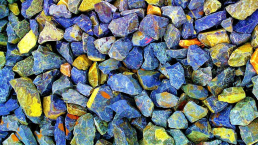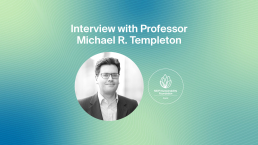
Interview with Dr. Paul Sylvester, Former Editor-in-Chief of Minerals
Dr. Paul Sylvester was the Editor-in-Chief of the MDPI Open Access journal Minerals (ISSN 2075-163X) and is currently Endowed Pevehouse Chair and Professor of Geosciences at Texas Tech Unviersity. Dr. Sylvester received his PhD from Washington University in St Louis and his BS from Purdue University. Prior to joining the faculty at TTU, he worked as a research associate at the Australian National University, University of Chicago and NASA/ Johnson Space Center, and as a professor at Memorial University of Newfoundland
Could you give us a brief overview or background about your field/work, the research you have conducted?
I am a geochemist by training and have studied the genesis of a wide variety of rocks, minerals, ores and meteorites using various geochemical methods. Since the mid-1990s, I have been a leader in the use of laser ablation inductively coupled plasma mass spectrometry (LA-ICP-MS) to examine the chemical and isotopic composition of minerals in thin section or as grain separates. Some of my more recent research has involved the platinum‒group‒element geochemistry of sulfides and metal alloys; uranium‒lead geochronology and hafnium‒isotope geochemistry of zircon; common-lead‒isotope geochemistry of feldspar; and the trace element geochemistry of impact‒melt‒glass.
Dr Paul Sylvester, why is this research important?
Much more than bulk rocks, minerals often preserve a detailed record of the various high- and low-temperature processes and conditions and isotopic ages present in Earth’s mantle and crust. Whereas compositions of bulk rocks are simply the integrated sum of multiple genetic processes and conditions, minerals commonly contain domains formed during various stages in the origins of rocks.
The spatial relationships between the domains can give the relative timing of genetic events but, even more importantly, the compositions of the domains reflect specific melt‒fluid sources and pressure‒temperature‒oxidation‒sulfidation conditions that are of keen interest to geologists. For instance, a mineral grain in a magmatic rock may preserve remnants of the source protolith rock as inherited domains; a record of fractional crystallization and/or magma mixing as chemically zoned igneous domains; and subsequent fluid infiltration as cross-cutting veins in, or altered rims on, the igneous domains.
Being able to measure the compositions of each domain, some which may be only tens of microns or less in size, is thus a very powerful research tool. This is why mineral geochemistry and geochronology—as determined by LA‒ICP‒MS and other microbeam techniques such as electron microprobe analysis and secondary ion mass spectrometry—have assumed a prominent role in geological studies over the past 15–20 years.
What appealed to you about the journal Minerals? What made you accept the position of Editor-in-Chief of this journal?
It was the opportunity to develop and expand the applications and approaches of mineral geochemistry and geochronology in geologic studies by identifying and encouraging particularly insightful and novel studies for publication. Minerals occupies a enviable position in publishing, being an Open Access journal at a time when research sponsors are increasingly requiring scholarly publications to be more accessible as a condition of funding. The journal is poised for significant growth, having built a solid reputation for publication of high-quality research papers in mining and mineral processing, but being young enough to allow capture of additional papers from complementary research areas.
Dr Paul Sylvester, what is your vision for the future of the journal?
My goal is to enhance the reputation of the journal Minerals as a publication venue for important studies of mineral research. Several other notable journals publish mineral research regularly so we must attract submissions from both established research disciplines that have been traditionally published in other outlets and research specialties that are not covered well elsewhere.
Established research areas of particular interest are, of course, methodologies for mining and mineral processing, but also novel uses of elemental and isotopic analyses of minerals for petrology, geochronology and thermochronology, thermobarometry, ore genesis and sedimentary provenance. Some emerging research areas of interest include applications of quantitative mineralogy to the oil and gas, manufacturing, forensics, environmental, geohazard and health sectors.
I would particularly like Minerals to become the premiere venue for the cross-fertilization of ideas between academic and industry researchers in mineralogy, leading to scientific insights that are simply not being made in studies published in other journals.
Minerals going forward
We thank Dr Paul Sylvester for taking the time to speak to us. See the journal homepage for more.










